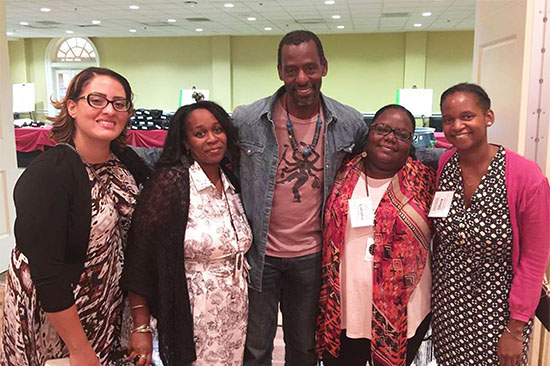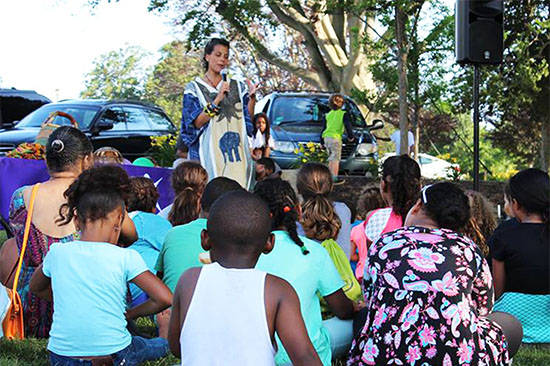
Catch up on Part 1 to gain an understanding of what community engagement means from a practitioner's perspective and more about Ms. Kachingwe's work at the Women's Resource Center in Newport.
How should researchers work with the community on projects?
You can probably tell by now that I’m a huge proponent of community-based participatory research in general. So, I’d say that it’s all about allowing the community to be involved in the decision-making processes from the very beginning. Not just collecting information from them as subjects, but allowing them to be a part of the decision-making around the information-collecting process.
Also, what often happens unfortunately is that the information is not fed back to the community. You collect it, get results, analyze and publish results, and then that last step of personally empowering the community to do something with your results and giving it back to them – and not just as a journal article - is often overlooked.
What are some strategies to help researchers avoid those missteps?
Generally speaking, it would be to value community engagement from the very beginning. Once you’ve gotten your funding and approvals, it’s too late to think about involving the community. It needs to be thought of from the start, when you have the most flexibility to define what you’re going to do.
It’s also important to think through what things you can let go of in good conscience and what things are more personal, or things you’re holding onto for other reasons. Often that line is gray, but researchers don’t always take the time to sift through that when designing their protocols or research methods. It’s difficult. We all like to have control over the process, but a lot of it we don’t necessarily have to.
The third piece is doing your best to find funders who are willing to give you the money while allowing for some level of ambiguity – and really advocating for why that’s important for the success of your project.
Finally, allow yourself enough time. When you’re involving the community at the ground level and in decision-making processes, it takes a lot longer. So build that into your plan as you’re able.
Can you think of an example of where funders allowing for ambiguity matters?
Sure, I’ll give an example of where ambiguity built into program implementation made all the difference. Bike Newport is one of our partners and they wanted to do a bike loop project. After
.jpg)
working with HEZ for a year, they made a strong case to their funders as to why they were not able to define where the loops would be and what they would look like. They knew they would be on the north side of Newport, but they couldn’t include the exact route in their proposal because they wanted to let the community decide that for themselves. They ended up getting the funding from People for Bikes to build the loops. Translating community engagement into research is really important.
What about community engagement projects that missed the mark?
A project that comes to mind is one that had good intentions, but missed key opportunities to engage the community in a sustainable way. It goes back to how researchers define community, and at what stage they involve the community.
This project was a day program offered to local kids. It had a well-defined structure, but there was a lot of frustration among community leaders who were already trying to engage the same population in similar ways. This project had more resources to secure participants, and they hired people who weren’t from the community to run it. This naturally alters the level of interaction between the instructors and kids.
One of the main things we were concerned about was sustained mentorship and the continuity of a positive non-parental adult figure present in the lives of these children. When projects come into communities and do great work, but then leave once their efforts have concluded, it’s a loss for the community. Who knows when they’ll come back, and who will pick up the pieces? And, in the meantime, they’re competing for the engagement of kids with other programs that are more rooted in the community and that will still be here when the project ends.
Researchers must balance what they would like to do with efforts that are already entrenched in the community so that their work is not disruptive.
For this project, I would’ve rather them hire from this community and rely on community leaders to help them identify potential hires. Unfortunately, this project engaged too late. They reached out after they had their funding, and a few weeks before they were set to start. Since they already had their IRB in place, it was a much more rigid plan. At that point, you’re limited. We understand why this happens, but ultimately, it’s not in the best long-term interest of the community that you’re working in.
